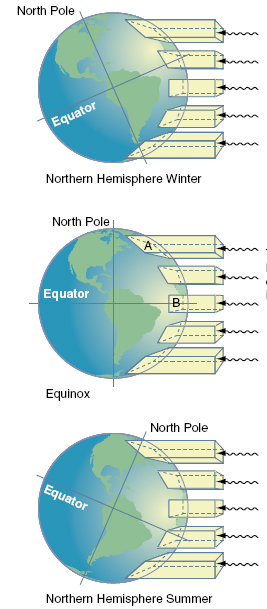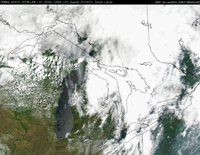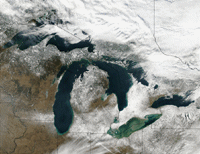Summary
|
Summer and Winter are the stable solstice seasons in the Great Lakes Region. In the winter, the Great Lakes Region experiences long nights and cold days. The northern hemisphere is tilted away from the Sun, incident solar energy is spread thin, and the sun rises and sets south of the equator. In the summer, the Great Lakes Region experiences short nights and warm days because the northern hemisphere is tilted toward the Sun so solar heating is more concentrated and efficient. Also, the Sun rises and sets north of the Equator between the summer solstice and autumal equinox, lengthening hours of daylight. The massive Lakes act like heat sinks that moderate the temperatures of the surrounding land, cooling the summers and warming the winters. The lakes also act like giant humidifiers, increasing the moisture content of the air. In the winter, this moisture contributes to heavy snowfall known as “lake effect” snow. Instruments on satellites provide excellent imagery documenting summer and winter weather in the Great Lakes Region.
|
 |
||||||



